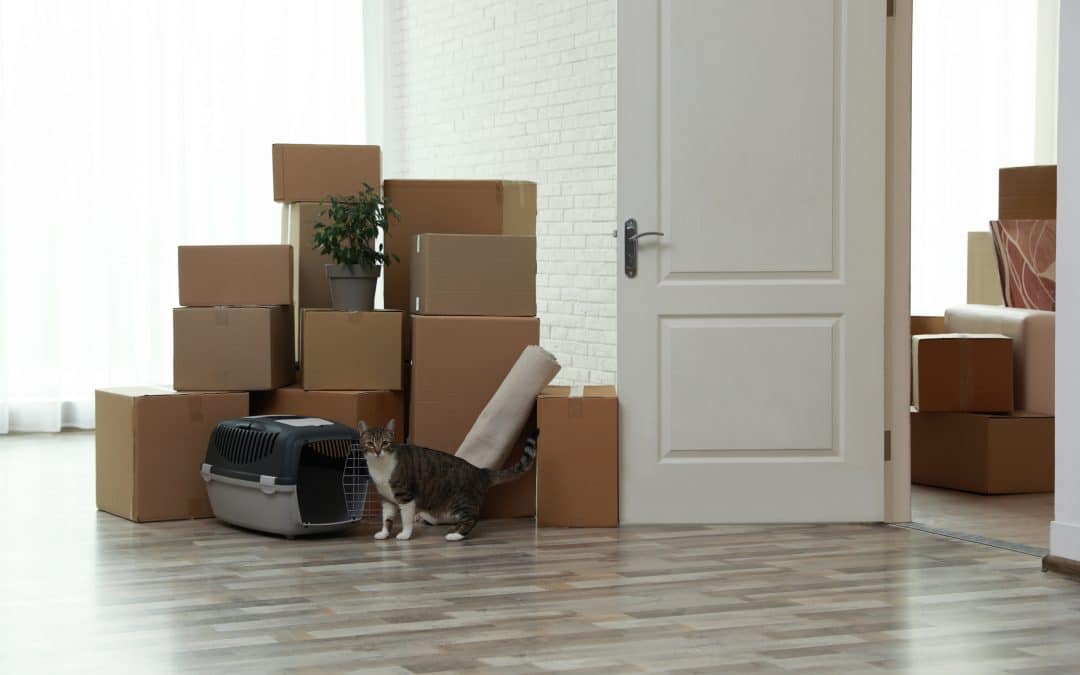There is a lot to think about when moving house and that might mean that you have not thought about the impact a move will have on your cat. Moving into a new home is an exciting prospect but to your cat, this means a complete change of scenery and routine which can leave them feeling lost and confused. We all know that moving home is a big change for humans, so imagine the impact it can have when moving house with cat. If you have any concerns about settling a cat into a new home then we are going to help you and your cat make the transition in the most efficient and comfortable way, helping to avoid problems with our expert advice.
What to do?
A change is a big thing for our pets, especially our cats and so when it comes to moving house, the aim is to do as much as possible to help them adjust. To achieve this, it can help to plan ahead before you move to your new home as this will help your cat to settle into the new home.
Before Moving to Your New Place
There is a lot more to the moving process that you might not realise and this begins way before you actually load your items into a removal van. So, before you move, there are some things that you can do that can prepare you and your cat.
- Find a Cat Carrier – This has to be suitable for moving and should be durable enough to ensure that it can withstand the move. It should also be large enough so your cat can stand up and move. This can then be left in a quiet room in your home so that your cat can familiarise itself with it. On a moving day, the cat carrier won’t be as much of a shock to them and they will be happy to spend time in it.
- Get an Identification Tag – Unfortunately, there is a risk that your cat might escape once you move or get lost. As a result, you want to make sure that they can be identified and that you can be contacted.
- Register With a Vet – You should make sure that you have a Vet in place for when you move into your new home. This should be close to your house so you can access them quickly and easily should you need to.
- Keep the Routine – Routine is a big thing for your cat, so keep that routine in place to keep them happy. Even when you are packing, ensure they still have food at the same time and if you let them outside, ensure they do so at the same time.
- Update Microchip Details – There is a chance that your cat could go missing during the lead-up to your move and during it. Therefore, updating their microchip details will ensure you can be identified as the owner.
- Create a Safe Space – It is possible to create a safe space in your home where you can put their bedding, toys and food. This space should be quiet and ideally empty as this will enable them to escape the noise and get used to this new safe space within their current home.
On Moving Day
Moving day is extremely busy and that means that your cat will get pushed aside for this period of time. There is so much going on and so much to think about that it might seem unfair to expect them to fit in. Therefore, moving day should be as stress-free for your cat as possible.
- Consider a Cattery – A cattery might be the right option to help your cat avoid the stress of moving. They will be looked after during the move and you can introduce them to your new home once everything has settled down.
- Use The Safe Space – If the cattery is not an option then you can make use of the safe space. Put them in there and ensure they cannot escape. This will allow you to move without worrying about the well-being of your cat.
- Keep Their Routine – While moving day might be hectic, you should still keep your cat in a routine. Make sure they have food at the right time and remain calm as they will pick up on any changes in your mood.
- Travelling With Your Cat – When the time comes to move, make sure they are secured in their carrier and make sure it is secured down. Keep your cat reassured throughout the journey and make sure they have access to food and water.
- Their Scent – Cats give off pheromones that help them familiarise themselves with their home. So, use some of their blankets and rub them on their face before rubbing it onto corners at the height of their face as well as furnishings.
After Moving
- Expect Problems – Your cat is likely to experience some element of stress so expect some accidents, especially toilet-related accidents. Remember to be patient because, in time, your cat will adjust.
- Let Them Explore Slowly – Give them the opportunity to explore their new home bit by bit. Their surroundings will be new, so give them the chance to do it gradually but make sure windows and doors are closed.
Cat’s Behaviour After Moving
Your cat is likely to seem edgy and lacks confidence when they move but this is natural. They might seem more alert and frightened when they hear different sounds and they might not respond to things in the way that they used to. This is all completely natural but don’t worry, they will soon get back into a routine and make their new home their own.
Helping a Cat Settle to a New Home
Your cat might be an outdoor cat but you cannot let them out straight away. They should be kept in for three weeks so they can spread their scent around the home. You can then begin to sprinkle cat litter around the garden as this will make your garden familiar to them. When the time comes to let them out, do it just before they would have food as they are likely to return to the noise of food being rattled in a pouch. When they are outside, make sure the door is left open so they can get back in easily.
Final Thoughts on Moving with Your Cat
It is important that you spend time planning for your move while taking your cat into consideration. Moving home for them is a new and stressful experience but don’t assume they will adjust quickly and easily. Take time and be patient and in time, you will find that your cat will soon feel comfortable in their new home.

